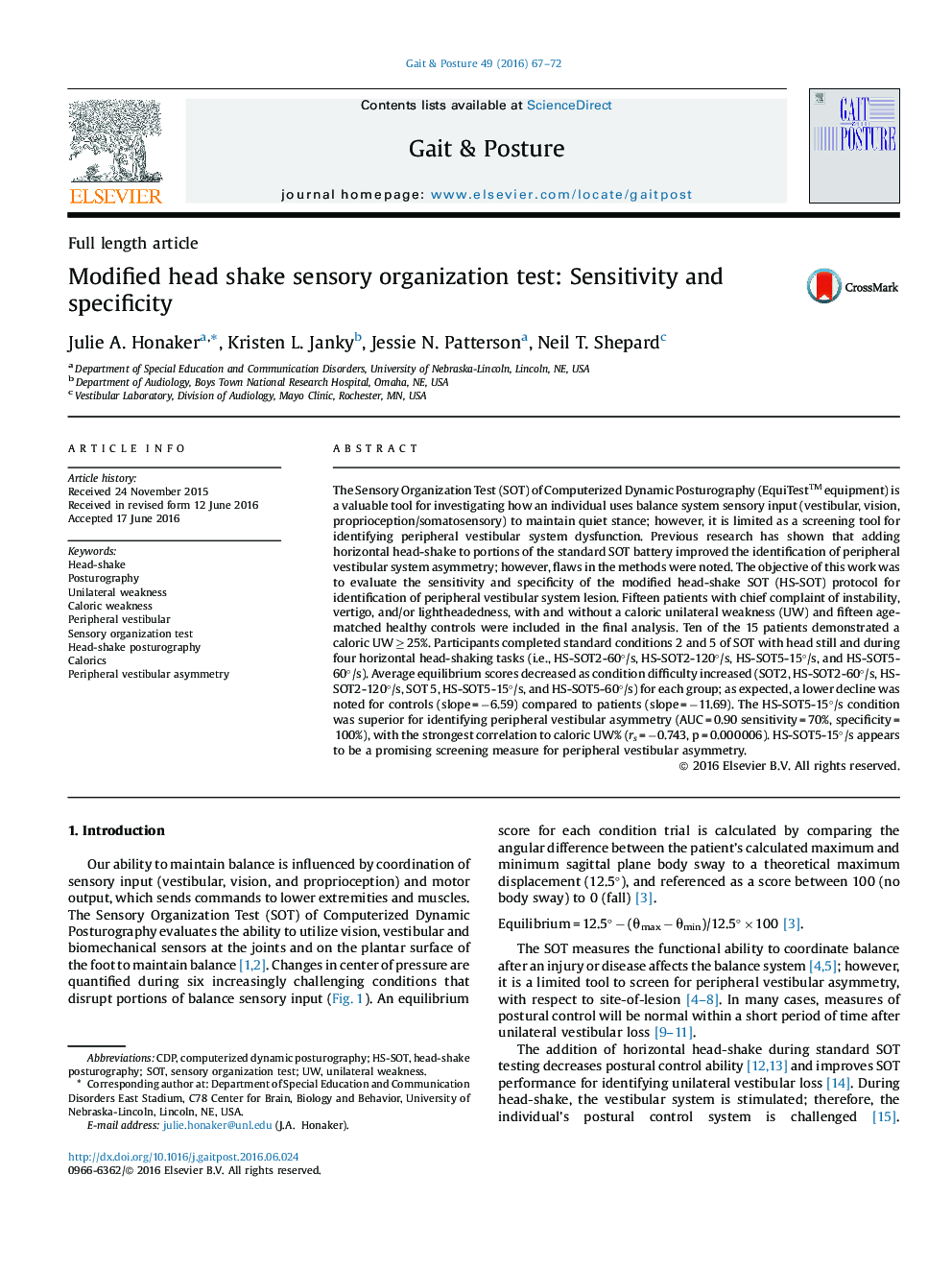| کد مقاله | کد نشریه | سال انتشار | مقاله انگلیسی | نسخه تمام متن |
|---|---|---|---|---|
| 6205400 | 1603846 | 2016 | 6 صفحه PDF | دانلود رایگان |
- A modified head shake sensory organization test (SOT) is proposed.
- Identification of peripheral vestibular asymmetry improved with 15°/s head shake.
- Head shake SOT at 15°/s had strong correlation with caloric weakness.
- Head shake SOT 15°/s useful for screening peripheral vestibular asymmetry.
The Sensory Organization Test (SOT) of Computerized Dynamic Posturography (EquiTest⢠equipment) is a valuable tool for investigating how an individual uses balance system sensory input (vestibular, vision, proprioception/somatosensory) to maintain quiet stance; however, it is limited as a screening tool for identifying peripheral vestibular system dysfunction. Previous research has shown that adding horizontal head-shake to portions of the standard SOT battery improved the identification of peripheral vestibular system asymmetry; however, flaws in the methods were noted. The objective of this work was to evaluate the sensitivity and specificity of the modified head-shake SOT (HS-SOT) protocol for identification of peripheral vestibular system lesion. Fifteen patients with chief complaint of instability, vertigo, and/or lightheadedness, with and without a caloric unilateral weakness (UW) and fifteen age-matched healthy controls were included in the final analysis. Ten of the 15 patients demonstrated a caloric UW â¥Â 25%. Participants completed standard conditions 2 and 5 of SOT with head still and during four horizontal head-shaking tasks (i.e., HS-SOT2-60°/s, HS-SOT2-120°/s, HS-SOT5-15°/s, and HS-SOT5-60°/s). Average equilibrium scores decreased as condition difficulty increased (SOT2, HS-SOT2-60°/s, HS-SOT2-120°/s, SOT 5, HS-SOT5-15°/s, and HS-SOT5-60°/s) for each group; as expected, a lower decline was noted for controls (slope = â6.59) compared to patients (slope = â11.69). The HS-SOT5-15°/s condition was superior for identifying peripheral vestibular asymmetry (AUC = 0.90 sensitivity = 70%, specificity = 100%), with the strongest correlation to caloric UW% (rs = â0.743, p = 0.000006). HS-SOT5-15°/s appears to be a promising screening measure for peripheral vestibular asymmetry.
Journal: Gait & Posture - Volume 49, September 2016, Pages 67-72
